Key takeaways
- Oat milk is a creamy and naturally sweet dairy substitute, ideal for enhancing the texture of desserts.
- Essential ingredients for homemade oat milk include just rolled oats and water, with optional flavor enhancements like salt or vanilla.
- Proper soaking, blending, and straining techniques are crucial for achieving the perfect oat milk texture.
- Oat milk’s stability in baking allows for creative experimentation in dessert recipes without the fear of curdling or separation.

Understanding oat milk basics
Oat milk is simply the liquid you get when you soak oats in water and then blend them until smooth. At first, I was surprised by how naturally creamy it felt—almost like it had its own richness without any added fats. Have you ever wondered why oat milk has become such a favorite for baking and desserts? For me, it’s that subtle sweetness and smooth texture that make it a perfect dairy substitute.
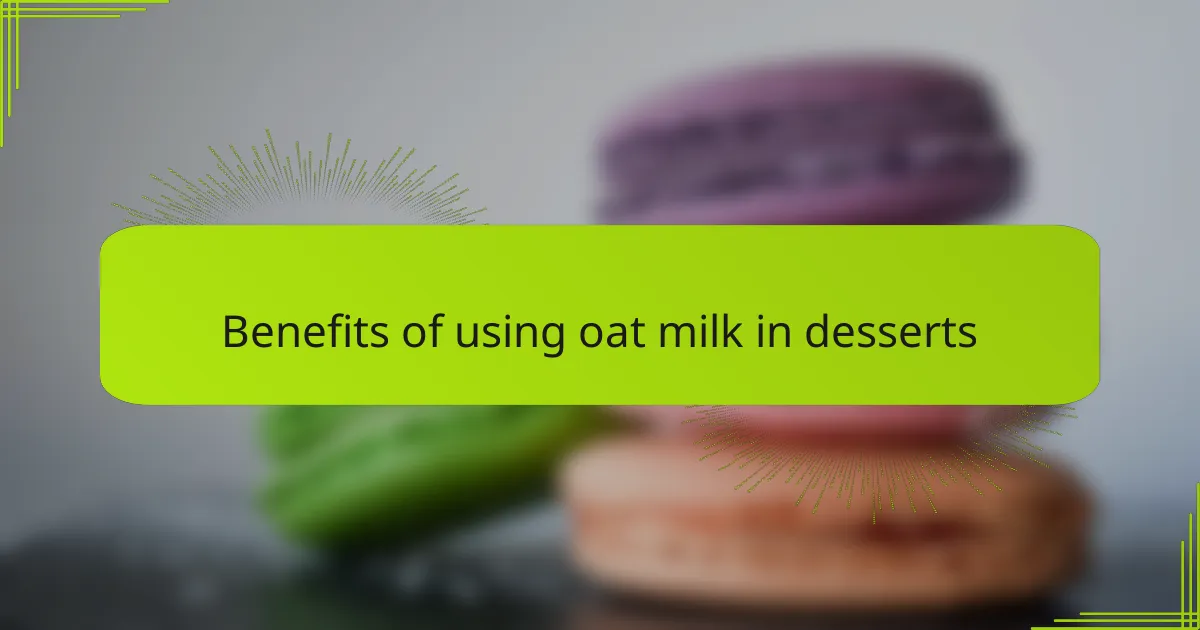
Benefits of using oat milk in desserts
One thing I love about using oat milk in desserts is how effortlessly it blends, giving a velvety smoothness that’s hard to beat. Have you noticed how some plant-based milks can feel thin or watery? Oat milk doesn’t—it adds body and creaminess that actually enhances the dessert’s texture.
Another benefit I’ve come to appreciate is its mild sweetness. It’s not overpowering but just enough to naturally elevate flavors without needing extra sugar. When I swapped oat milk for dairy in my favorite pudding, I was amazed by how it subtly boosted the taste, making it feel indulgent yet wholesome.
Lastly, oat milk tends to produce consistent results every time. I can rely on it for everything from cakes to custards, and it never curdles or separates during baking. That kind of reliability saves me a lot of worry in the kitchen, and honestly, it makes me more confident trying new dessert recipes. Have you experienced that kind of ease with other milk alternatives?

Essential ingredients for homemade oat milk
When I first started making oat milk at home, I was amazed at how few ingredients I actually needed. The essentials boil down to just rolled oats and clean, cold water—simple, right? It’s incredible how something so basic can yield such a creamy and naturally sweet milk that feels anything but plain.
I usually measure about one cup of oats to three or four cups of water, depending on how thick I want the milk to be. Have you ever found store-bought oat milk a bit too thin or watery? Adjusting the oat-to-water ratio at home gives me complete control, which makes all the difference in the texture and richness of the final product.
Sometimes, I like to add a pinch of salt or a little vanilla extract to deepen the flavor, especially when I’m aiming to use the milk in desserts. But honestly, even without these extras, the oats themselves have this subtle sweetness that can gently lift any recipe. It’s that simple ingredient list that first drew me in—and keeps me coming back.
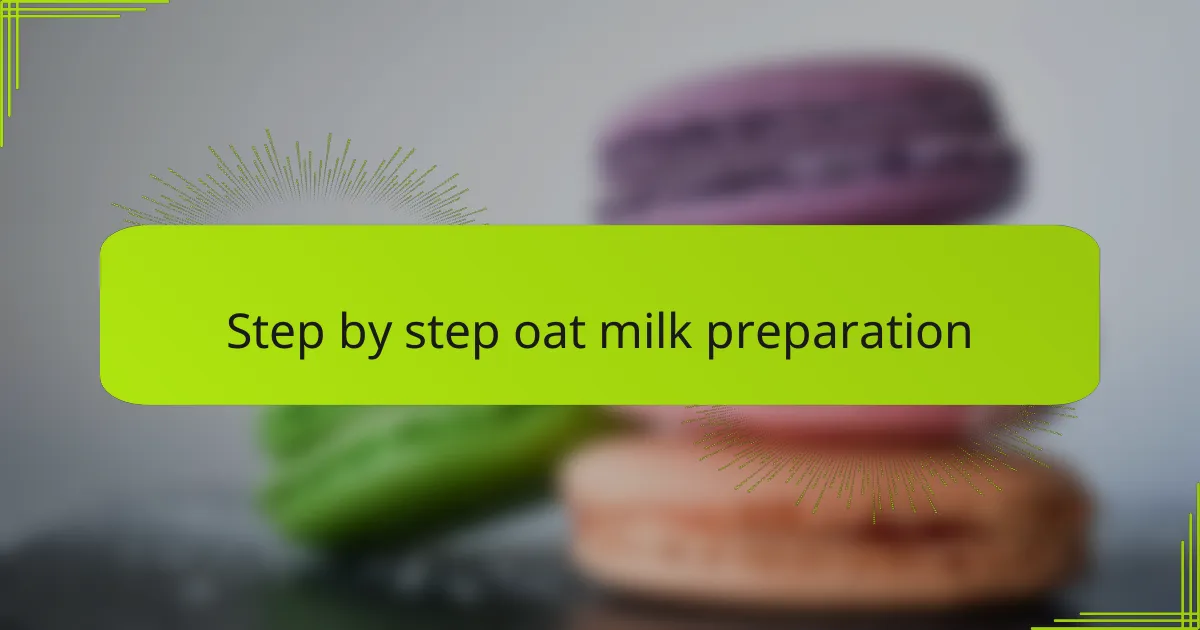
Step by step oat milk preparation
The first step I take is soaking the oats in cold water for about 15 to 30 minutes. This softens them up, making the blending process smoother and the milk creamier. Have you ever tried skipping this soaking—only to find the milk a bit grainy? Trust me, that soak really changes everything.
Next, I pour the soaked oats and fresh water into my blender—usually three to four cups of water per cup of oats, depending on how thick I want the milk. I blend everything on high for around 30 seconds until it’s silky smooth. It’s fascinating how just a quick whirl turns simple oats and water into this rich, creamy liquid.
Finally, I strain the mixture through a fine mesh sieve or a nut milk bag to remove the oat pulp. This step feels like magic: as the liquid filters through, what remains is perfectly smooth oat milk, ready to use. Don’t you love how homemade oat milk carries that fresh, wholesome vibe compared to store-bought versions? I know I do.
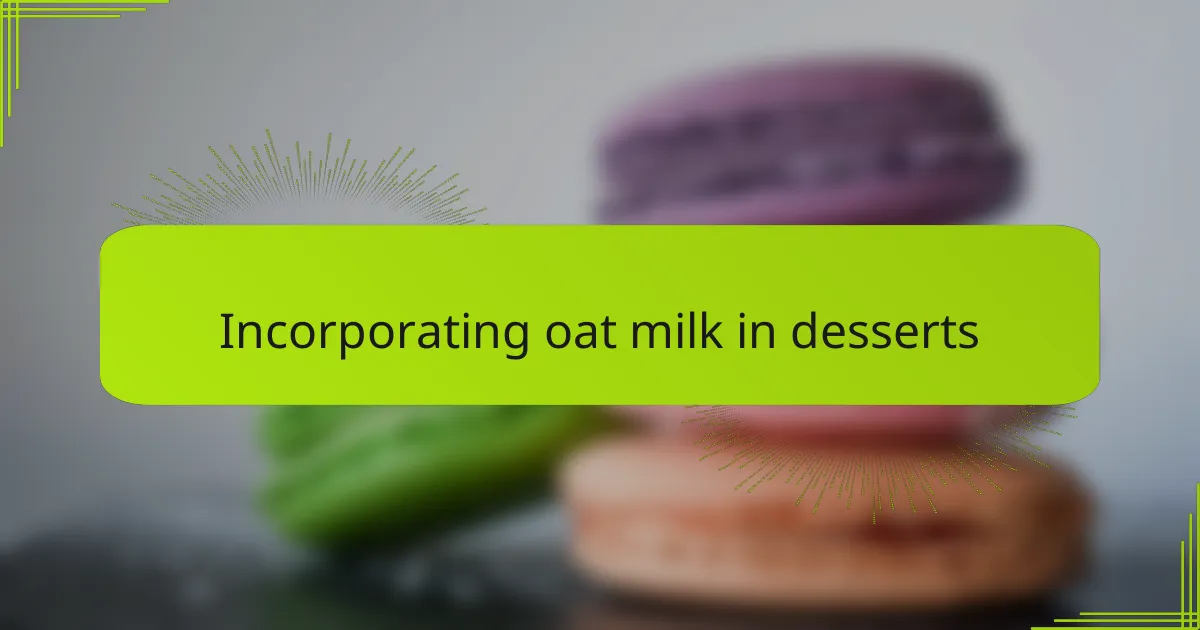
Incorporating oat milk in desserts
When I first started swapping oat milk into my dessert recipes, I was curious how it would hold up compared to heavy cream or regular milk. To my surprise, it blended seamlessly into everything—from silky custards to fluffy cakes—without losing that luscious texture I crave. Have you ever noticed how some milk alternatives can leave a weird aftertaste? Oat milk never did that for me; it felt like a natural upgrade.
One of my favorite ways to use oat milk is in recipes that rely on creaminess, like puddings and ice creams. Its gentle sweetness and smooth body enhance the flavor without overpowering the other ingredients. I remember making a chocolate mousse with oat milk that turned out so rich and decadent, my family couldn’t believe it wasn’t dairy-based. Isn’t it amazing when a simple change produces such incredible results?
I also appreciate how oat milk handles heat during baking. Unlike some plant milks that curdle or separate, oat milk stays stable, which gives me peace of mind when experimenting with new desserts. Do you like trying new recipes but worry about how the milk substitute will react? Oat milk’s reliability has been a game-changer in my kitchen, letting me focus on creativity rather than troubleshooting.
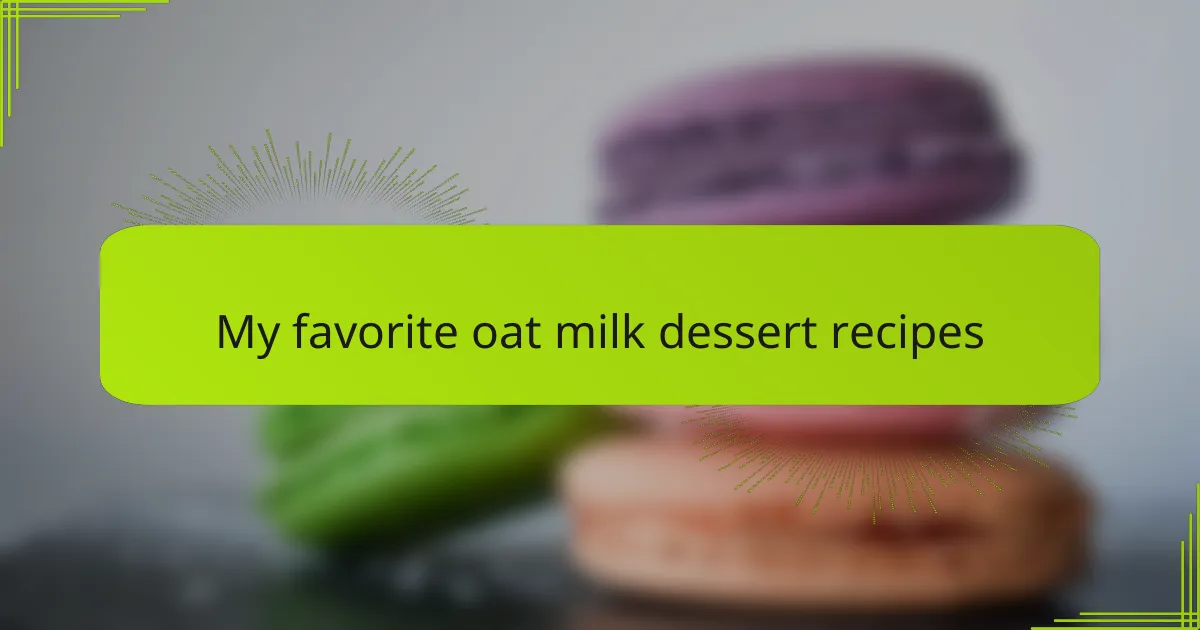
My favorite oat milk dessert recipes
One of my absolute favorite oat milk dessert recipes has to be a classic rice pudding made with homemade oat milk. The creaminess it adds is just unbeatable, making the pudding feel rich without any heaviness. Have you ever tasted rice pudding that’s both comforting and light? That subtle oat sweetness truly elevates it in a way dairy just can’t match.
Another recipe I keep going back to is chocolate oat milk ice cream. I was skeptical at first—could oat milk deliver that silky texture ice cream demands? Let me tell you, when I first churned it and took a bite, the smoothness and depth of flavor completely surprised me. It’s now a staple treat in my house, especially when I want something indulgent yet dairy-free.
I also love whipping up oat milk panna cotta for special occasions. It sets beautifully and carries a delicate vanilla aroma that feels so inviting. Have you ever been blown away by how a simple substitution like oat milk can turn an ordinary dessert into something memorable? For me, this recipe’s success reminded me that sometimes the best improvements come from the simplest changes.
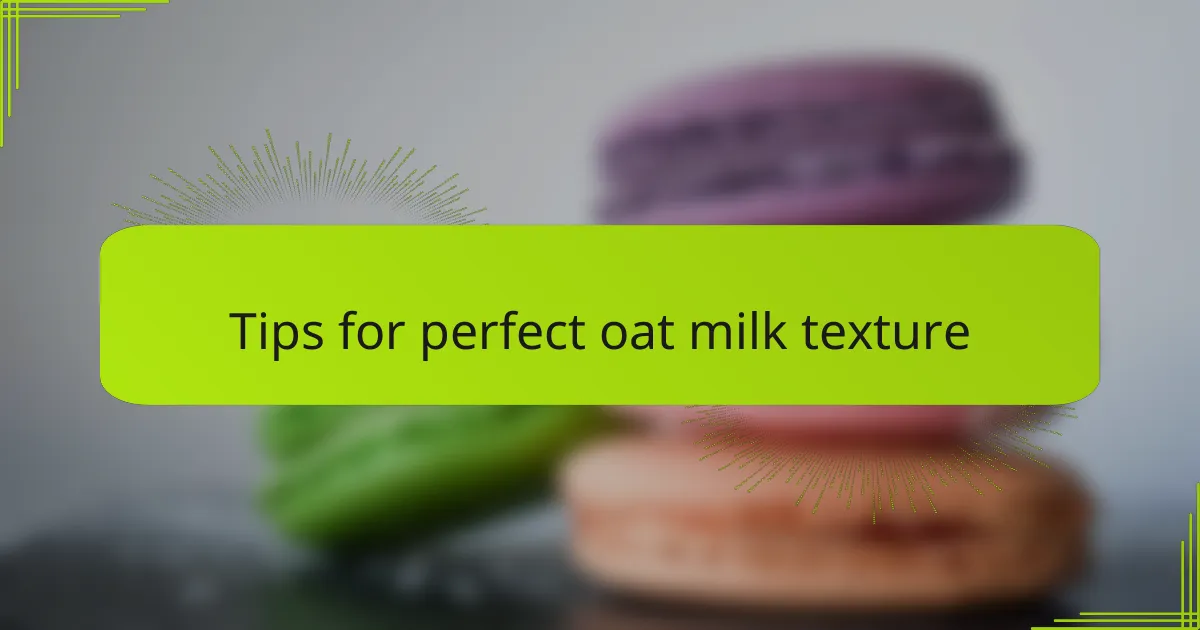
Tips for perfect oat milk texture
Getting the perfect oat milk texture is truly a little art. I’ve found that blending just long enough—about 30 seconds—is key; any longer, and the milk can get slimy, which is definitely not the creamy feel I’m after. Have you ever ended up with oat milk that feels sticky or too thick? Trust me, timing makes all the difference.
Straining the oat milk through a fine mesh sieve or a nut milk bag is another game-changer. Early on, I skipped this step and ended up with a gritty texture that ruined my desserts. Once I started straining properly, the milk was silky smooth and blended effortlessly into everything from custards to cakes. Don’t you love how that smoothness makes homemade oat milk feel so luxurious?
Adjusting the oat-to-water ratio also gives you complete control over the creaminess. I usually stick to a 1:4 ratio for most desserts, but when I want a richer texture—like for a pudding—I go heavier on the oats. Have you experimented with this yet? Playing with these proportions turns oat milk from just ‘good’ to absolutely perfect in texture, and that’s the kind of control every home cook needs.




